Tibi Puiu
Source - Tattoo artist volunteers as guinea pig to solve mystery of world's oldest tattoos (zmescience.com)
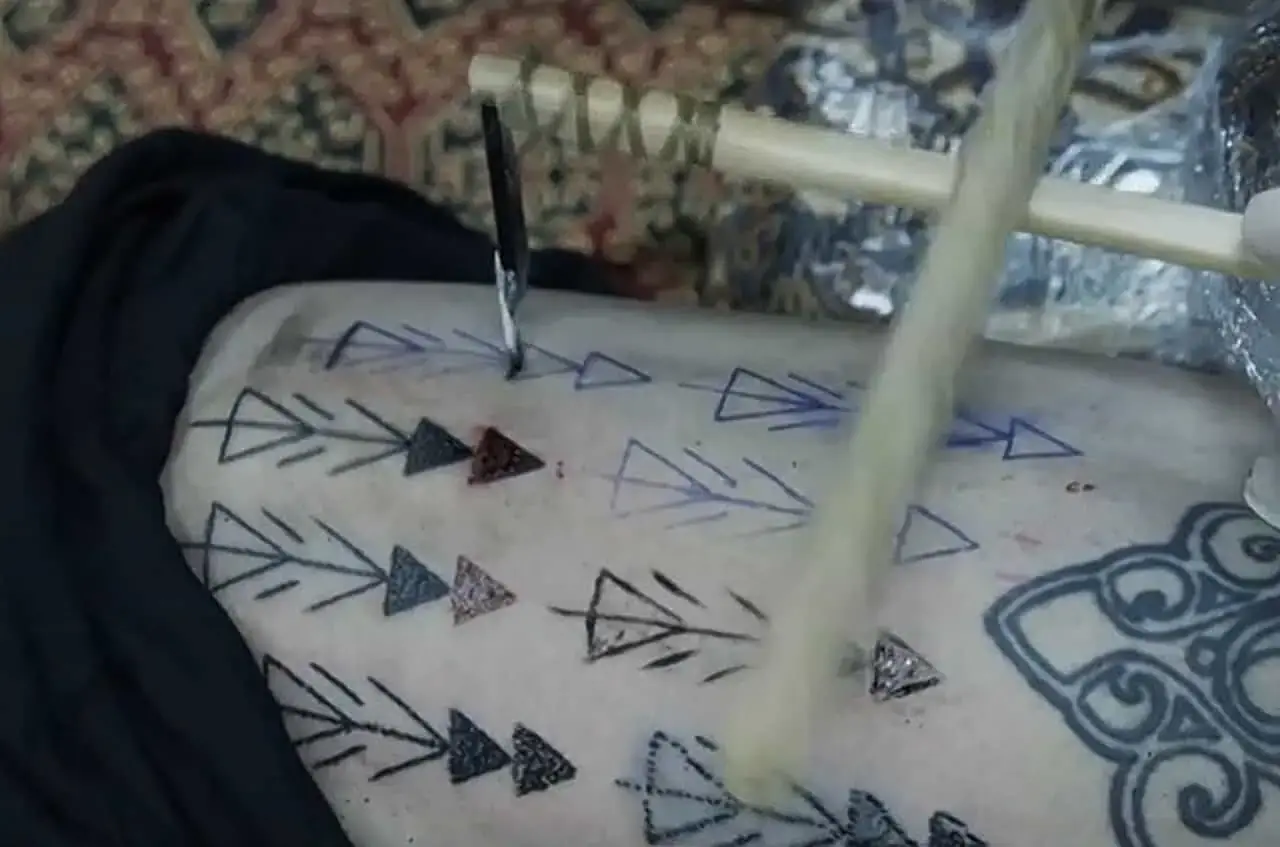 New Zealand tattoo artist Danny Riday tattooed himself using techniques and tools thought to have been used more than 5,000 years ago. Credit: European Journal of Archaeology.
New Zealand tattoo artist Danny Riday tattooed himself using techniques and tools thought to have been used more than 5,000 years ago. Credit: European Journal of Archaeology.
The mystery of Ötzi the Iceman’s tattoos has intrigued scientists and historians for decades. Ötzi, the European Tyrolean Iceman died and was buried beneath an Alpine glacier along the Austrian–Italian border around 3250 B.C — and he had 61 tattoos across his body. These are the world’s oldest tattoos.
A new study has now shed light on the techniques used to etch these ancient markings on Iceman’s skin, providing insights into the life and culture of our ancestors.
Understanding Ancient Tattooing
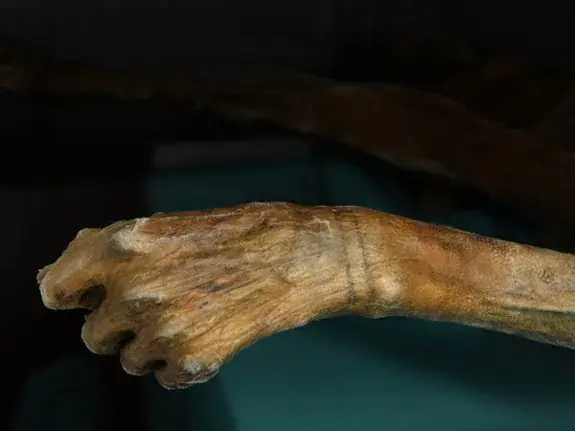 This bracelet-like tattoo adorns the wrist of the 5,300-year-old Iceman. Credit: South Tyrol Museum of Archaeology.
This bracelet-like tattoo adorns the wrist of the 5,300-year-old Iceman. Credit: South Tyrol Museum of Archaeology.
Tattooing is an ancient art, but its exact origins remain a mystery. Historical documents trace tattooing back to Greece in the fifth century B.C., and possibly even earlier in China. Researchers have discovered evidence of tattooing in art, through tattoo tools, and on preserved human skin. Of these, mummified skin provides the most direct archaeological proof of ancient tattooing practices.
In 1991, Ötzi the Iceman was discovered in the Italian Alps, remarkably preserved for over 5,300 years shrouded in ice. We’ve learned many things about him since then. He was murdered, shot from behind with an arrow that penetrated his left shoulder. The contents of his mummified stomach showed he was killed just an hour after eating a final meal of dried ibex and deer meat with einkorn wheat. He wore a leather coat stitched together from the hides of several sheep and goats.
Mossy plant remains from the murder site suggest Ötzi roamed a lot during his final days. He would have climbed from about 600 meters (1,969 feet) in elevation to 3,210 meters (10,320 feet). In 2023, scientists analyzed his DNA showing Ötzi had dark skin and was probably bald, challenging previous assumptions about his appearance.
One can look at this list of features and conclude Ötzi is probably the most studied mummy in the world. You wouldn’t be wrong. It’s thus rather surprising that we’ve only recently come to understand how one of Ötzi’s most visible features — his many tattoos — came to be.
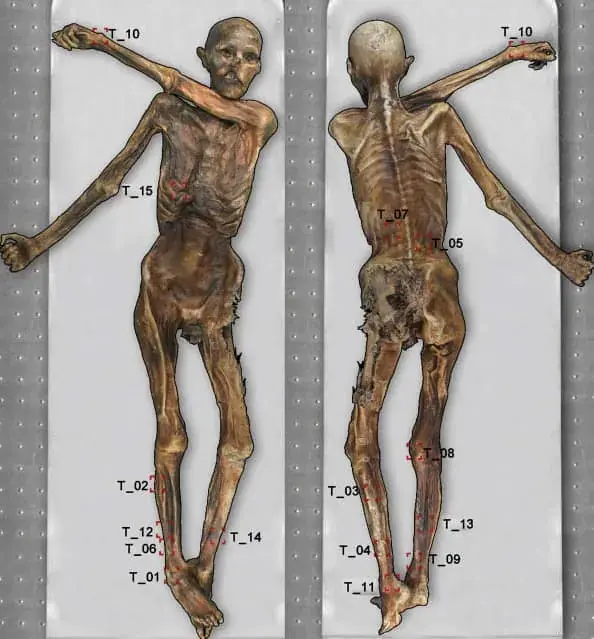 This graphic shows the general location of each of the 61 tattoos on the Iceman’s body. Credit: South Tyrol Museum of Archeology.
This graphic shows the general location of each of the 61 tattoos on the Iceman’s body. Credit: South Tyrol Museum of Archeology.
Copper Age Ink
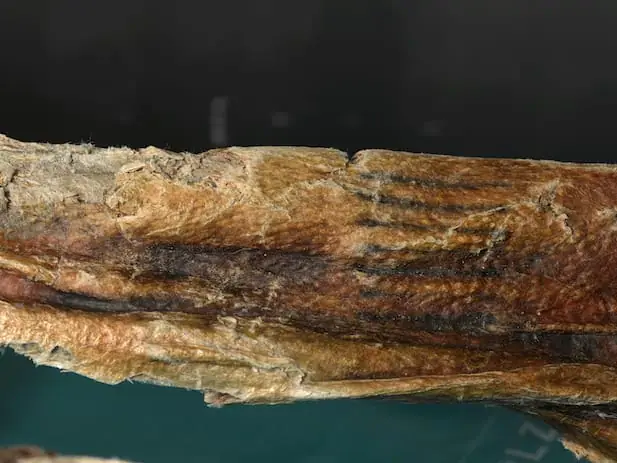
Tattoos on the body of Ötzi, the Tyrolean Iceman. Credit: South Tyrol Museum of Archaeology.
A collaborative effort among archaeologists, historians, and tattoo artists has led to a breakthrough in understanding these ancient symbols. Their research involved replicating Ötzi’s tattoos on modern skin using different ancient techniques to determine which method was most likely used.
Previous studies have proposed four methods accessible to ancient tattoo artists: hand poking, subdermal tattooing, hand tapping, and incision. Most of Ötzi’s tattoos are short, straight lines, which suggests they were likely made by the incision method. This technique involves making a cut in the skin with a sharpened object, like a stone, and then inserting a coloring material, such as ash, into the wound.
In such cases, science demands experimentation. New Zealand tattoo artist Danny Riday volunteered as the guinea pig. He tattooed his own leg with markings similar to those found on Iceman’s body using the four techniques. Riday used different tools, including animal bones, copper, obsidian, a modern steel needle, and even a boar tusk. After they healed, these modern replicas were compared to the ancient tattoos through detailed imagery.
A new point of reference
The researchers found that the hand-poking method closely matched the characteristics of Ötzi’s tattoos. This technique involves using a sharpened stick dipped in ink to puncture the skin, resulting in a series of tiny, overlapping disks that combine to make a line. An animal bone or copper awl was probably used.
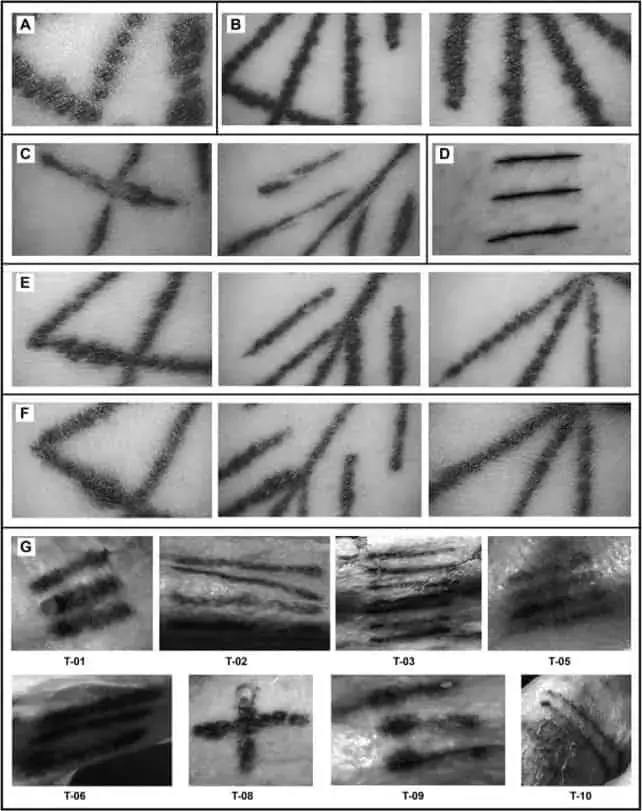 Comparison of tattoo replicas (A to F) to tattoos on Iceman (G). Credit: European Journal of Archaeology.
Comparison of tattoo replicas (A to F) to tattoos on Iceman (G). Credit: European Journal of Archaeology.
“Our findings reveal that there are discernible variations in tattoos created using different tools and techniques,” wrote the authors of the new study.
“This data may be applied to the study of preserved remains from archaeological and museum collections, as well as to analysis of historical imagery and traditions, to illuminate previously unknown aspects of the associated cultures.”
The findings were reported in the European Journal of Archaeology.